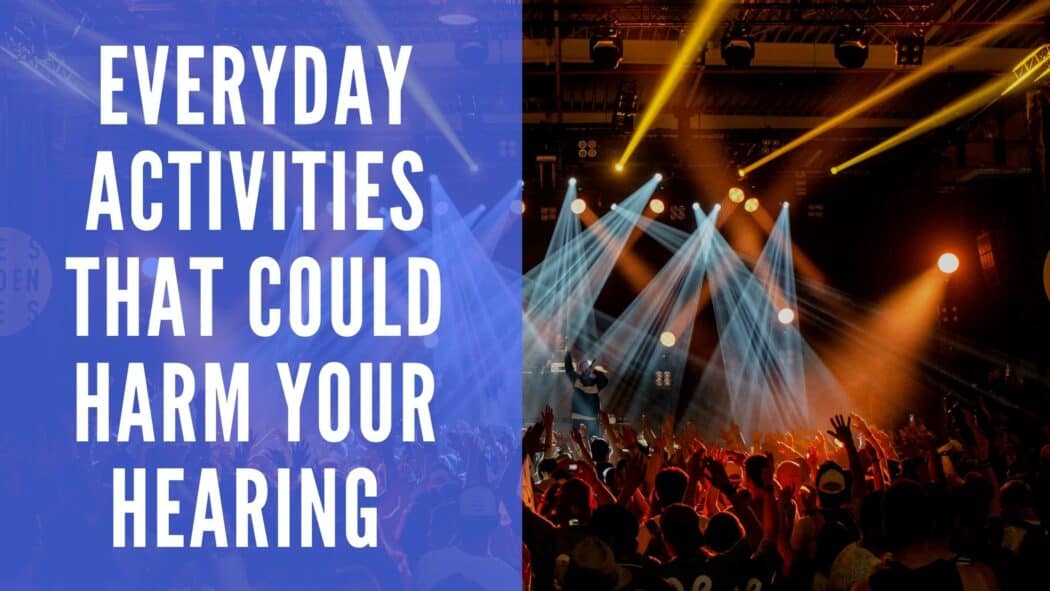Noise-induced hearing loss (NIHL) is one of the least-understood health concerns affecting people today. While it is perhaps the most preventable type of hearing loss, it is also one of the most common. After a brief period of decline, it seems to be on the rise again. About 10% of millennials have measurable hearing loss that is most likely tied to noise exposure, and about 17% of Gen-Z’ers have it. This is especially concerning considering that Gen-Z is the younger of the two generations.
Why Is Noise-Induced Hearing Loss (NIHL) So Common?
It’s hard to imagine that we might be exposing ourselves to health risks by simply stepping outside our doors or listening to our favorite music, but that is, unfortunately, the case. The machines that build our great society, the entertainment we consume, and the tools and gadgets that increase our productivity at home have forever altered our idea of what is possible in this world—and even what it means to be human.
Many of the devices we interface with on a daily basis have the capability to cause hearing loss in the course of normal use, but most of us don’t realize this. When we think of NIHL, we think of loud rock concerts, shooting ranges, explosions, and other extremely loud events. In fact, sound levels do not have to be painful or even unpleasantly loud to cause hearing loss.
How Loud Is Too Loud?
NIHL is caused not only by the loudness of sound but by a combination of loudness and duration of exposure. Most of the time, a motorcycle driving past you will not cause hearing loss, but if you were to ride that motorcycle for even just 15 minutes, that might be enough to cause a small amount of permanent hearing loss. If you do that every day, it might add up to a significant amount of hearing loss over time. If you ride for not just 15 minutes but a full hour, you’ll experience even more hearing loss.
Sounds as low as 85 dBA (decibels A-weighted) can cause hearing loss after about 8 hours of exposure. 85 dBA is about the loudness of a gas-powered lawnmower. Part of the reason that NIHL was on the decline for some time was OSHA’s (Occupational Safety and Health Administration’s) requirement, instituted in the 1970s, that employers ensure their employees were not exposed to average sound levels exceeding 85 dBA without hearing protection. Previous generations of workers often experienced life-altering hearing loss before retirement age. Even if the noise on the factory floor wasn’t terribly loud—though it often was—it would add up to hearing loss over the course of a workday.
For every additional 3 dBA of volume, the time it takes to cause hearing loss is cut in half. That means by the time we reach 100 dBA, permanent hearing loss sets in about 15 minutes. 100 dBA is the average decibel level at a high school dance or riding a motorcycle.
What About Personal Listening Devices (PLDs)?
PLDs are tricky because the actual volume experienced by the listener is nearly impossible to measure. Additionally, our brains get used to hearing a certain volume level, and then we are tempted to turn it up. For the most part, setting the volume on your PLD above about halfway will cause hearing loss in the average amount of time we tend to listen to them.
A few ways to help make sure your PLD doesn’t cause hearing loss include:
- Start with the volume all the way down, and turn it up until it’s just loud enough that you can hear clearly.
- Take a break from listening every half hour to one hour.
- Use over-the-ear (OTE) headphones rather than earbuds. OTE headphones move the drivers further from your eardrum, reducing the impact and lessening the likelihood of hearing loss.
- Use noise-canceling headphones. These will help reduce the perception of environmental noise, allowing you to comfortably listen at a lower volume.
Hearing Protection
We certainly cannot always avoid places where noise is a problem. Luckily, hearing protection is available to help keep our ears safe no matter what we wish to do. Whether you’re a gun enthusiast, musician, music-lover, or woodworker, there is a type of hearing protection for you.
To get started on your journey toward better, safer hearing, make an appointment for a hearing test today and consult with your hearing care provider about the best ways to keep yourself safe while you do what you do!

